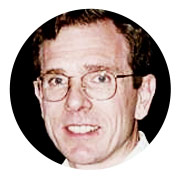Basics of Microwave Filter Design: Introduction to Filter Basics
This course will provide an introduction covering the superheterodyne receiver, the ideal brick wall filter, and insertion loss and return loss concepts. Additionally, approximation theory and equal ripple functions as well as amplitude and group delay responses will be discussed. Lowpass prototypes will be covered in this course including Chebyshev and elliptic prototypes. The course will review the process of finding prototype element values, frequency and impedance scaling, and transformations to highpass, bandpass, and bandstop. Finally, unloaded Q and loss will be discussed. In particular, Qu and volume, basic concepts will be reviewed. Additionally, Qu for common technologies and estimating midband loss will be discussed.
What you will learn:
- Discuss the four basic filter types
- Consider the filter approximation problem
- Review filter design trade-offs
Related courses:
Who should attend: Electrical engineer, Systems engineer, Hardware engineer, Design engineer, Product engineer, Communication engineer
Instructor
Daniel G. Swanson

Daniel G. Swanson, Jr. received his BSEE degree from the University of Illinois and his MSEE degree from the University of Michigan. Mr. Swanson is currently a member of the Strategic R&D group at Tyco Electronics (M/A-COM) where he supports filter and antenna design efforts and consults on EM simulation issues in general. Mr. Swanson is a Fellow of the IEEE. He is co-chair of MTT-1 (CAD) and a member of MTT-8 (Filters). He is a reviewer for IEEE-MTT Transactions, Microwave and Wireless Components Letters, and the Int. Journal of RF and Microwave Computer-Aided Engineering.
Publication Year: 2010
ISBN: 978-1-4244-6195-0